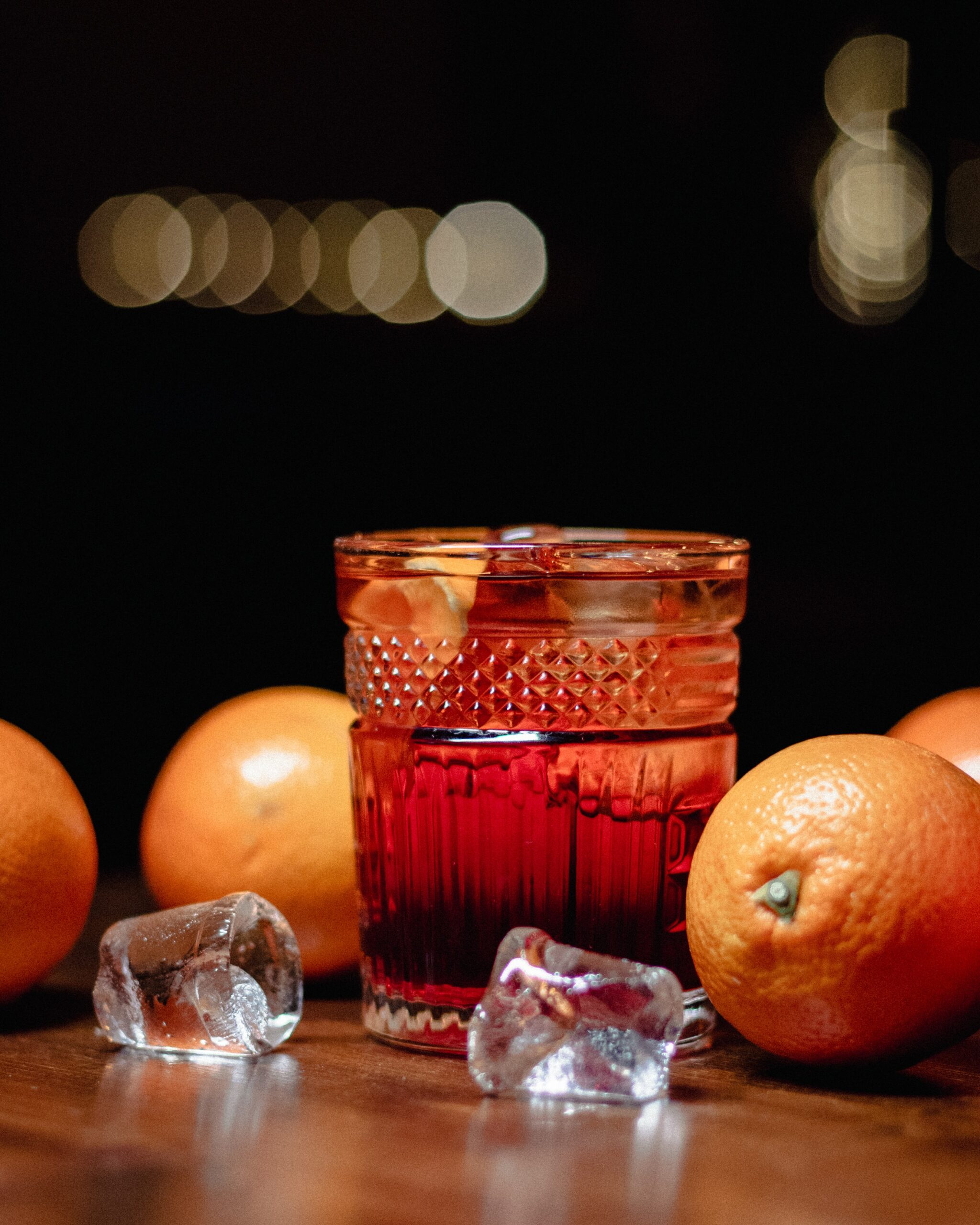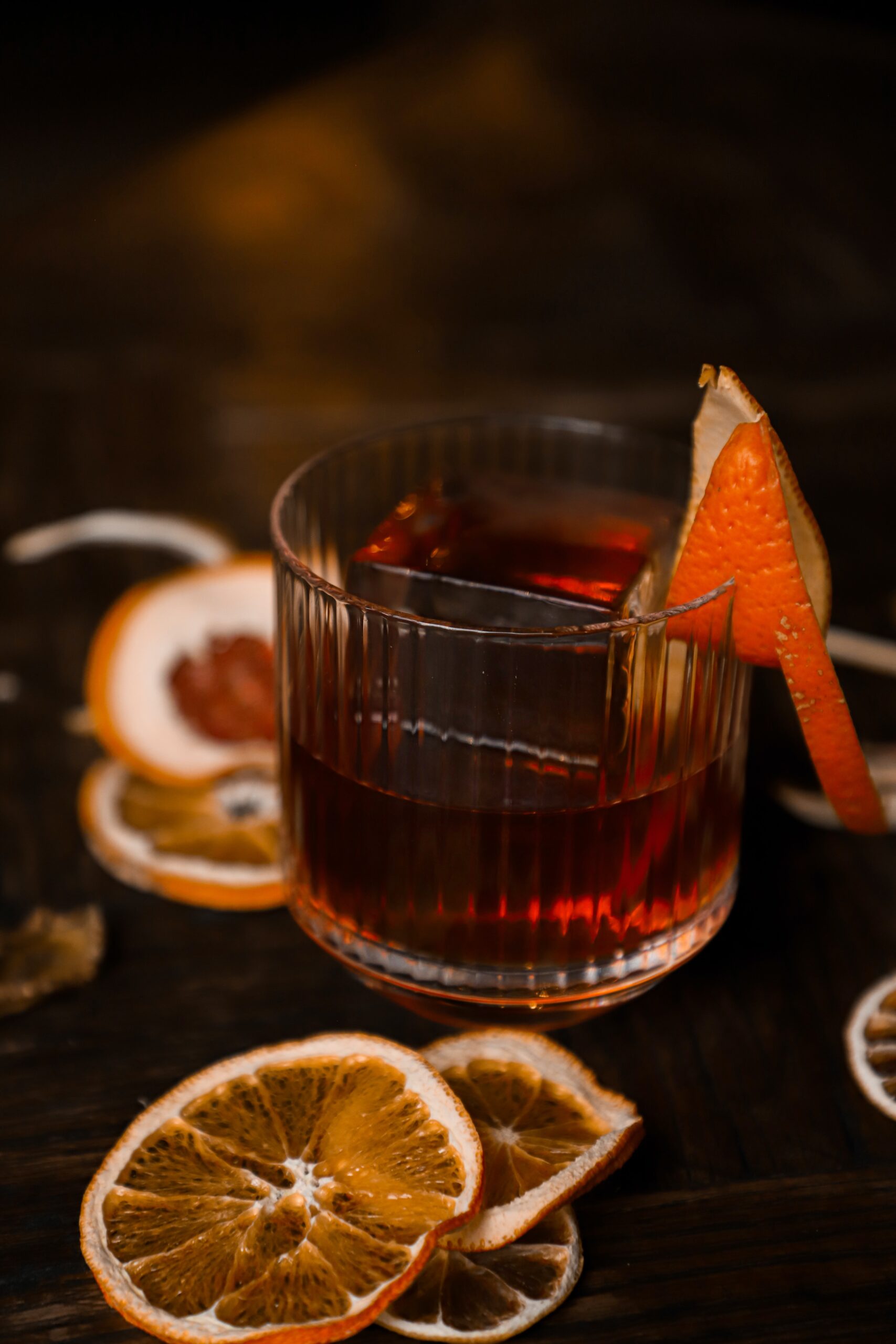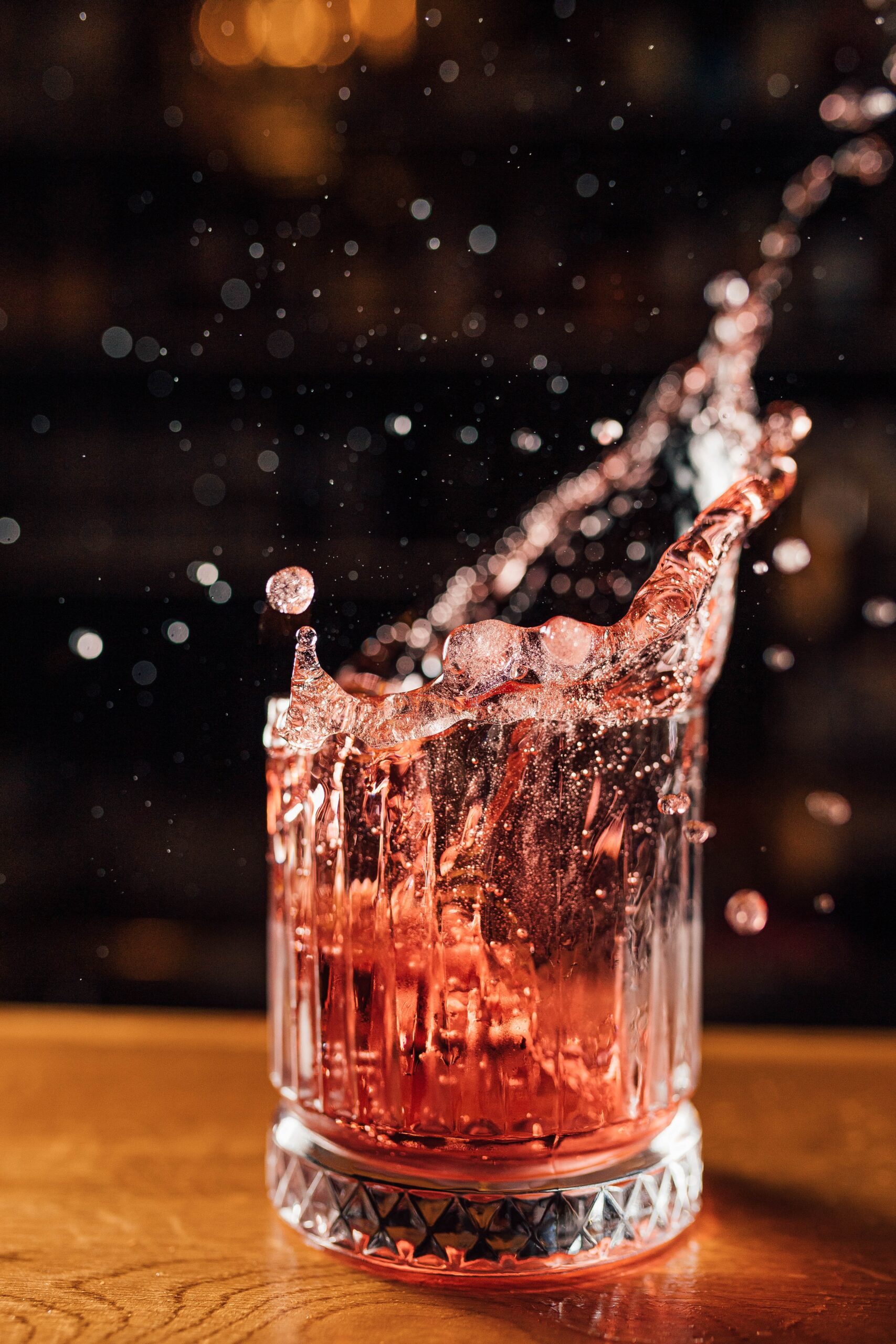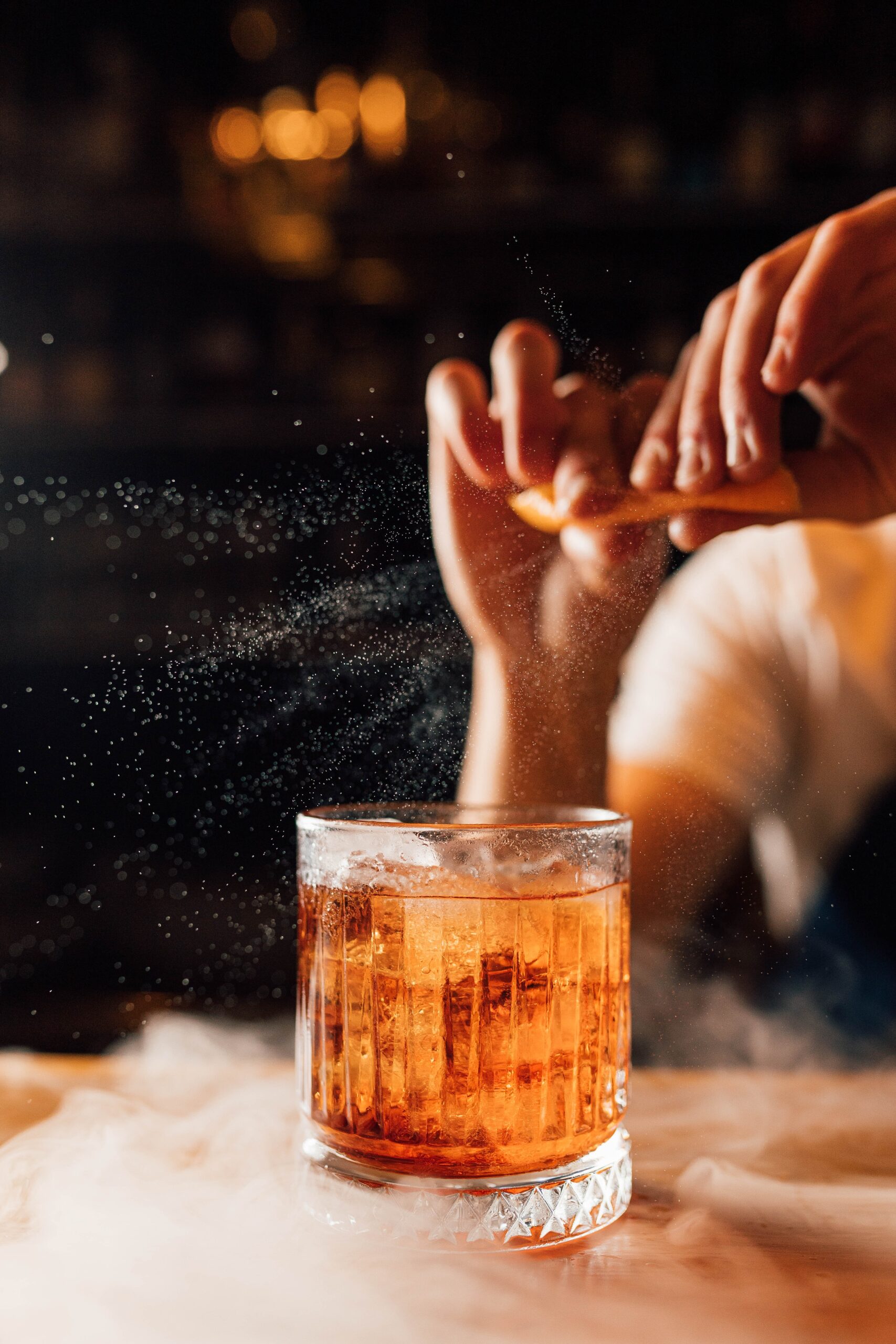The Negroni – stylish, sophisticated, the drink of James Bond and Anthony Bourdain – it’s that grownup cocktail that says nonchalant elegance with an urbane wink. A classic born in Italy, it’s time to learn a bit more about the cocktail that Bond drank when he wasn’t in the mood for a Martini.
In fact, the drink is so embedded in the Italian soul that an entire week is dedicated to it every year in the autumn in Rome, so what better way to get an up-close look at this iconic aperitivo than with the bartenders celebrating its story right in Italy’s capital, where talented mixologists prepare and reinterpret the famous cocktail that the late great Anthony Bourdain referred to as his “perfect drink.”
Celebrating Negroni
Step up to a barstool with Gianluca Storchi, globetrotting bartender at Giulia Restaurant, Riccardo Marinelli and Valerio Visentin, consultant and bartender respectively at Terrazza Les Étoiles, at the Atlante Star hotel in Rome, and they can recount enough stories, anecdotes, recipes and reinterpretations of the famous cocktail to make for the perfect departure point for anyone who wants to really get to know the Negroni.
How the Negroni Came to Be
The origin of the Negroni is particularly fascinating because it is a 100% Italian story. “The Negroni has been the best-selling drink in the world in recent years,” explains Riccardo Marinelli, bar consultant at Terrazza Les Étoiles, at the Atlante Star hotel in Rome, “and represents the Italian cocktail icon par excellence.”
Marinelli explains the original recipe, “Its structure allows, with only three ingredients, to unite the strong and balsamic elements of gin, the bitter ones given by Campari and the citrusy and sweet notes of Italian-style Vermouth, or Red Vermouth, which is also known internationally as Sweet Vermouth, Italian Vermouth or precisely Red Vermouth.”
The Negroni represents the evolution of the mixed drink, born as one of the first Italian cocktails to see the coming together of different elements. “Suffice it to say that MiTo or Milan/Turin was born first,” Marinelli says, “created with Campari and Vermouth. Milan is precisely the identifying city of Campari bitter and Turin of Vermouth, and the MiTo cocktail put together these two components both by name and by ingredients. In an early evolution of this drink, soda was added and from this transformation, the Americano was born. It takes a further step to discover how the Negroni was then born.”
The story goes that it was Count Camillo Negroni who brought gin to Italy, to be exact to Florence, from London. Appreciating its taste, he asked his trusted bartender, Fosco Scarselli, to add it to the Americano. With the addition of gin to the cocktail, a new way of drinking the Americano was created, in the manner of Count Negroni, giving the new drink its name.
Variations on a Theme
According to mixology experts, that of the Negroni is a highly modifiable recipe, depending on the tastes of the customer. If someone prefers it softer, all they need to do is vary the amount of bitter in favor of Vermouth; if, on the other hand, they want a more bitter Negroni, they will need to raise the quantity of bitter and lower that of Vermouth; then there are those who prefer a stronger version, which sees gin emerge over the other ingredients. In fact, the Negroni undergoes both simple and straightforward modifications, such as those just described, and variations that involve the use of other elements, allowing bartenders to crossover and play with newer and newer versions.
The Negroni Balsamico
Giulia Restaurant bar manager Gianluca Storchi has come up with a special version of the signature cocktail, modifying the classic recipe with a hint of balsamic bitters. The drink is cooked in sous-vide (vacuum at low temperature) with the addition of fresh raspberries and Damascus rose petals, then served lightly smoked with rhubarb to enhance the fruity and spicy notes of the cocktail.
The Negroni, has over time also become a much sought-after cocktail on Giulia Restaurant’s menu thanks to Gianluca’s passion for aromatic and spicy cocktails: there is always the Negroni Balsamico (bottle aged) with Bombay Sapphire, Campari, vermouth mix, bitters, and orange smoke. In its apparent simplicity, it is also one of the cocktails that lends itself most to “variations on the theme” and enrichments: proof of this is the fact that over the years a great many bartenders have created their own original recipes that have since become classics.
“For those who love the world of mixology and mixed drinks, the Negroni represents the maturity of the drink, because those who order it know exactly what they want to drink by recognizing the merits and flaws of each different hand that prepares it,” Storchi explains. “It is an ‘adult’ drink for demanding customers, suitable for a full-bodied aperitif or an after-dinner drink.”
The Negroni in the Woods
Terrazza Les Étoiles bartender Valerio Visentin proposes his own special variation of it: the “Negroni in the woods.” The intention is to bring a hint of forest to the classic recipe, so a pre-mix of cherry liqueur and berries is made, which serve to bind and enhance the soft notes of Vermouth and contrast those of Campari.
To add additional freshness and woody hints to the cocktail, two drops of Mountain Pine are added. A final step is grapefruit essential oil for a citrusy touch. The drink is to be worked in throwing, a technique for cooling, diluting and oxygenating that ultimately yields a much silkier drink on the palate. This version of Negroni is meant to make the cocktail softer and enhance the Campari component. It is in fact perfect for an aperitif, but is also appreciated after a meal.
Have a Second Negroni
In the words of Anthony Bourdain: “Eat an oyster. Have a negroni. Have two. Be open to a world where you may not understand or agree with the person next to you, but have a drink with them anyways. Eat slowly. Tip your server. Check in on your friends. Check in on yourself. Enjoy the ride.”





